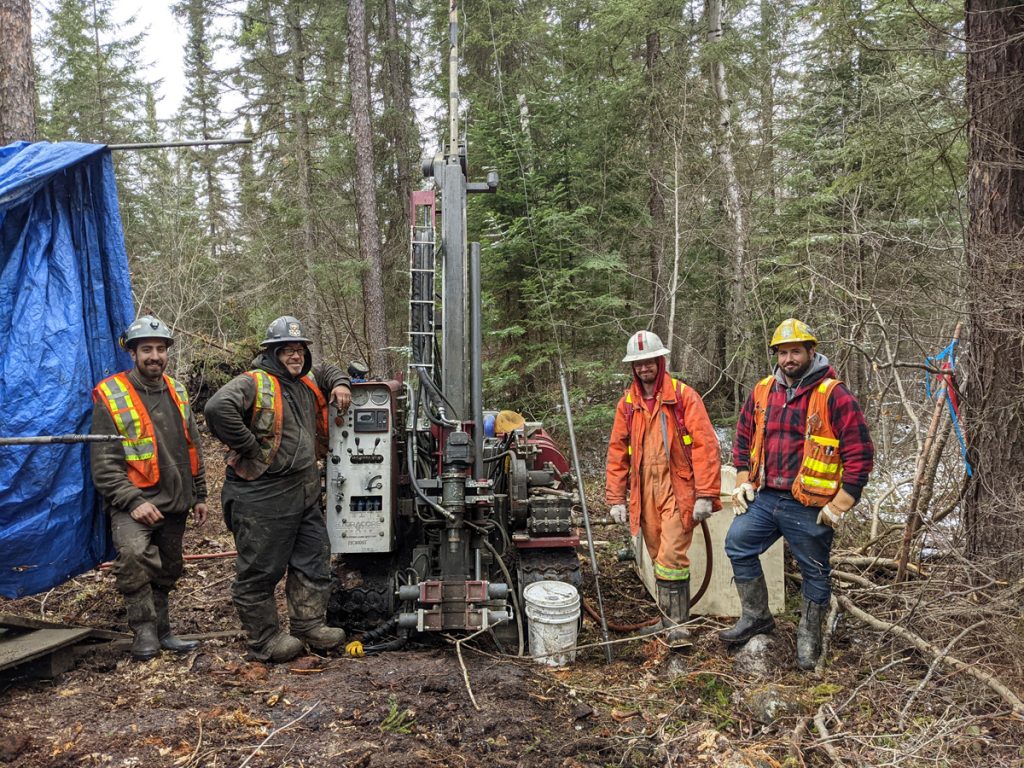Palladium One Mining drills 0.10% nickel over 70.1 metres at Tyko I, Ontario

Palladium One Mining Inc. [TSXV-PDM; OTCQB-NKORF; FSEW-7N11] reported initial results from the 2023 drill program on the Tyko I property, which forms part of the larger Tyko nickel-copper project in Ontario, Canada.
Highlights: New areas of nickel mineralization and new chonolith/feeder dike structures have been discovered.
In the West Pickle area, chonolith/feeder dike structures now extend over more than 5 km of strike length. A new nickel zone has been identified with intercepts returning up to 0.4% Ni and 0.2% Cu over 2.7 meters, including 1% Ni and 0.4% Cu over 0.9 metres in hole TK23-128 in an area with soil anomalies as high as 0.15 % Ni, 0.27% Cu and 86 parts per billion (ppb) palladium plus platinum.
Drilling along the eastern margin of the West Pickle zone targeting bore hole electromagnetic anomalies (BHEM) returned 1.8% Ni and 1% Cu over 1.5 metres in hole TK23-134.
Three-dimensional modelling of the West Pickle zone geology following a magnetotelluric (MT) survey suggests the zone continues at least 500 metres farther northeast, where it intersected magnetic and soil anomalies associated with a newly confirmed ultramafic chonolith/feeder dike structure.
In Q4 2023, 3,023 metres were drilled in 22 diamond drill holes on the Tyko projects, 12 holes drilled on the Tyko I property are detailed in this release.
“Tyko’s new nickel district geologic model continues to be confirmed with the 2023 drilling program. The discovery of an additional zone of high-grade nickel mineralization (hole TK23-128) at shallow depth is highly encouraging. Notably, the MT anomaly extending east of the West Pickle zone remains to be tested along with other priority targets, while additional exploration permits will be required in advance of drilling,” stated Derrick Weyrauch, president and CEO.
The 2023 drill program comprised 22 holes totalling 3,023 metres on both the Tyko I and Tyko II properties. The program included 12 holes targeting the West Pickle area of Tyko I which form this release. Drilling in the West Pickle area was designed to be shallow and to test for near-surface mineralization proximal to soil anomalies previously reported. Deeper drill testing of the MT geophysical anomaly that could connect West Pickle to the RJ zone (4-5 km to the east), and the Gionet zone on Tyko II will require additional exploration permits.
The result of the drill program successfully intersected significant ultramafic rocks confirming the chonolith/feeder dike model. Future exploration plans include trenching, mapping and channel sampling to better understand the controls on this new mineralization followed by drill testing.
The most significant result of the program was a new area of high-grade Ni-Cu mineralization intersected 1 km northwest of the West Pickle zone, in an area with significant Ni-Cu-platinum-group-element soil anomalies having up to 0.15% Ni, 0.27% Cu and 69 parts per billion Pd and 17 ppb Pt in soils. These anomalies were offset from the magnetic high, suggesting more extensive non-magnetic ultramafic rocks in the area. Hole TK23-128 intersected sheared Ni-Cu sulphide mineralization in altered pyroxenitic rocks returning 0.4% Ni and 0.2% Cu over 2.7 metres, including 1% Ni and 0.4% Cu over 0.9 metres.
Two holes tested Maxwell plates modelled from BHEM surveys on the West Pickle zone. Hole TK22-133 did not intersect any mineralization or ultramafic rocks, the source of the Maxwell plate remains unexplained. Hole TK23-134 intersected the modelled Maxwell plate returning 1.8% Ni and 1% Cu over 1.5 metres. The West Pickle zone horizon remains open to both the east and west.
The Tyko nickel-copper-cobalt project is located approximately 65 km northeast of Marathon, Ontario, Canada. Tyko is an early-stage, high-sulphide-tenor, nickel-copper (2:1 ratio) project with multiple mineralized zones spanning over a 20-km strike length and demonstrating the potential for a new greenfield nickel district.
Palladium One is targeting district-scale, nickel-copper sulphide and platinum group element (PGE) deposits in Canada and Finland. The Lantinen Koillismaa (LK) project in north-central Finland is a PGE-copper-nickel project that has existing NI 43-101 mineral resources, while both the Tyko and Canalask high-grade nickel-copper projects are located in Ontario and Yukon, Canada, respectively.
